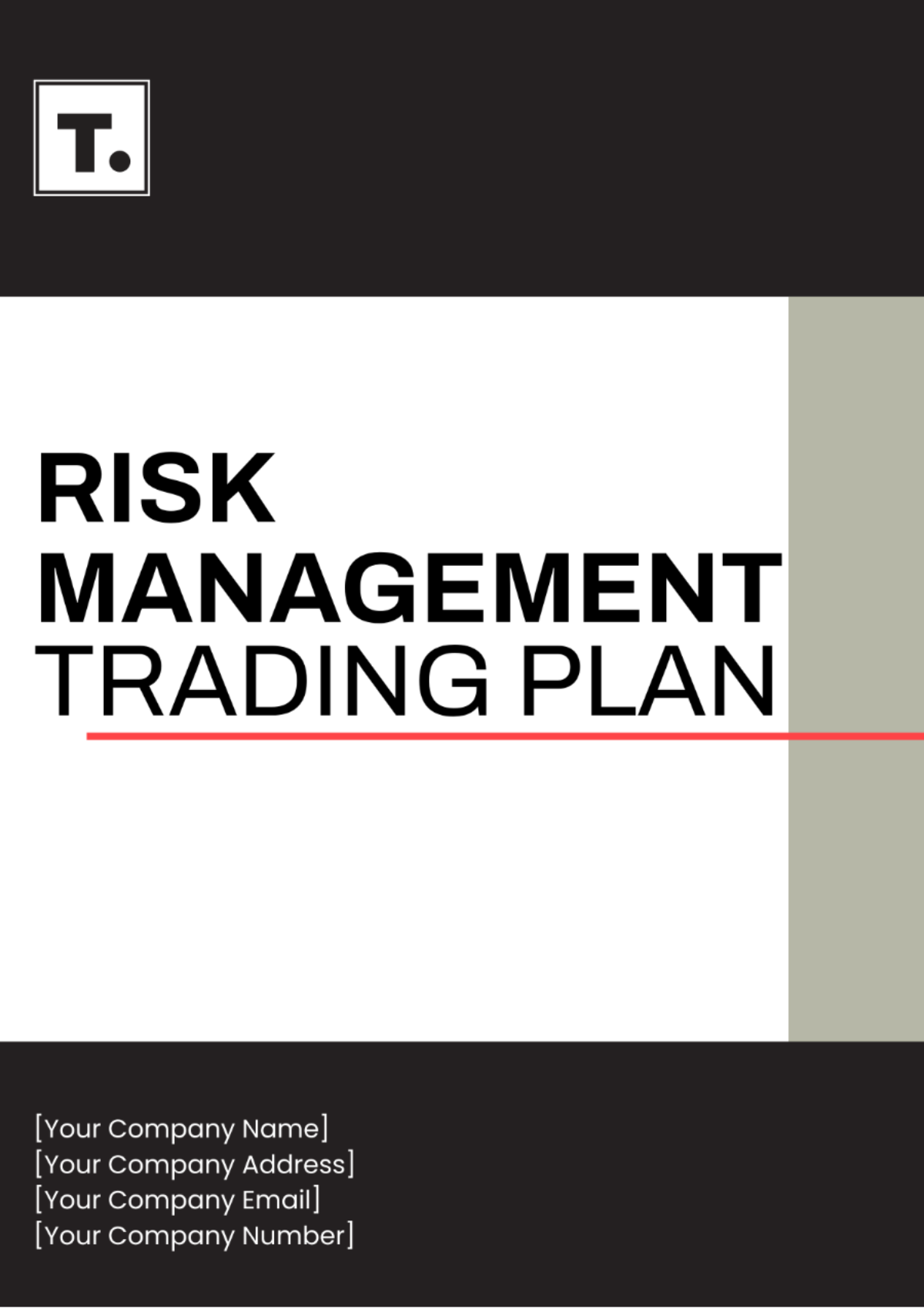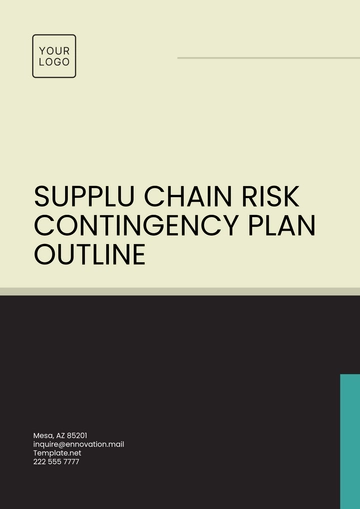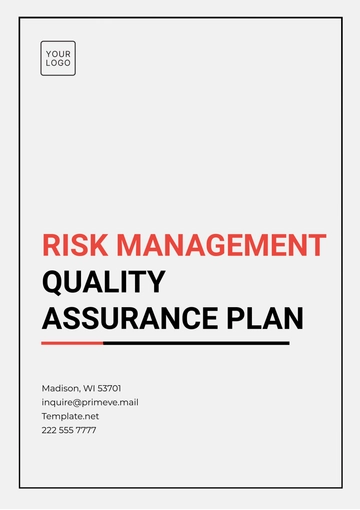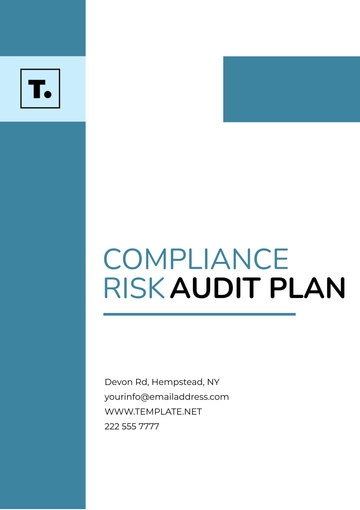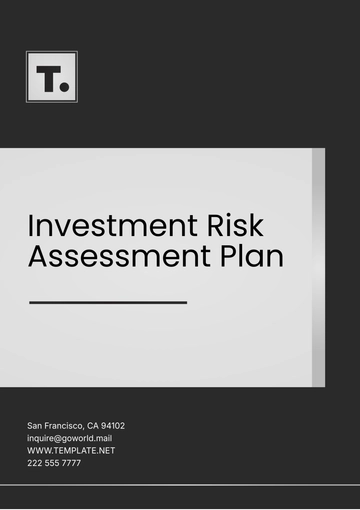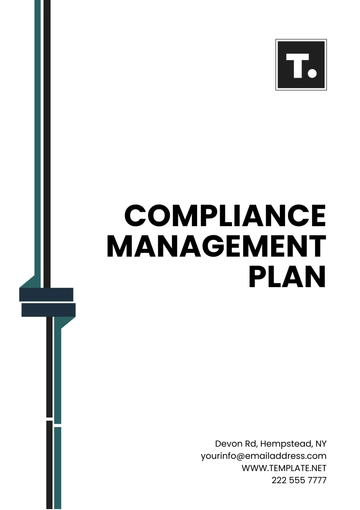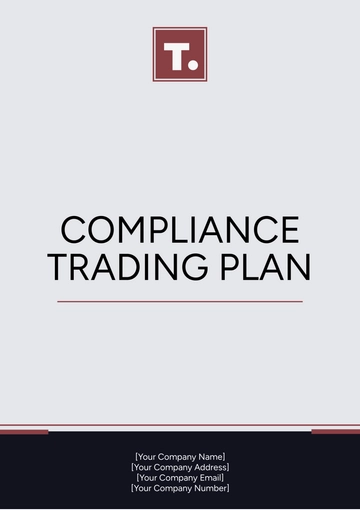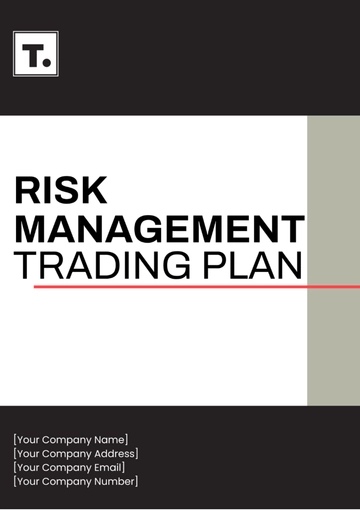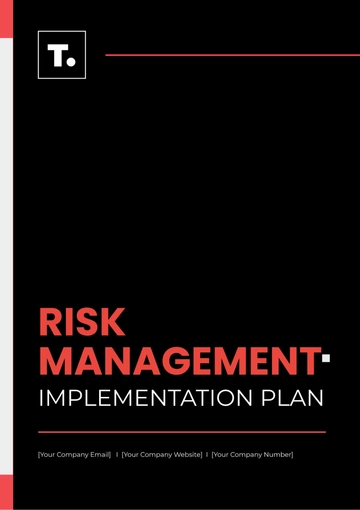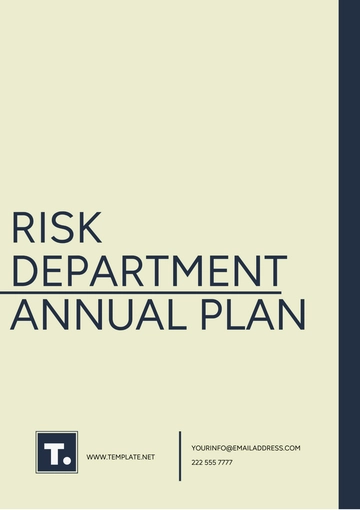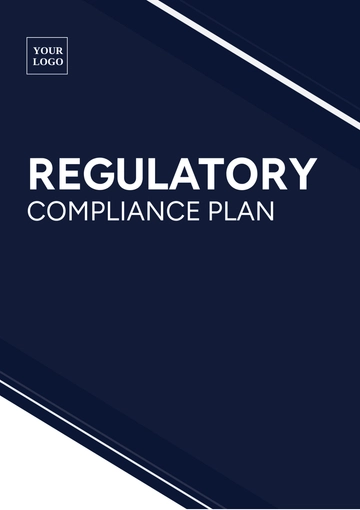Risk Management Trading Plan
I. Introduction
As an individual trader, it is crucial to have a well-defined risk management trading plan to safeguard capital and maximize profitability. This plan outlines strategies for effectively managing risks in trading activities.
II. Risk Tolerance Assessment
Before engaging in any trading activity, it's essential to assess your risk tolerance. This involves evaluating your financial situation, investment goals, and willingness to accept losses. Use the following table to assess your risk tolerance:
Risk Tolerance Level | Description |
|---|
Low | Prefers minimal risk with steady returns. |
Medium | Willing to accept moderate risk for potentially higher returns. |
High | Comfortable with high levels of risk for the possibility of significant gains. |
III. Trade Entry and Exit Rules
Establish clear criteria for entering and exiting trades to minimize losses and capture profits. Consider factors such as technical indicators, fundamental analysis, and market sentiment. The following table provides examples of trade entry and exit rules:
Trade Entry Criteria | Trade Exit Criteria |
|---|
Breakout above resistance levels | Stop-loss triggered below support levels |
Bullish candlestick patterns confirmed by volume | Take-profit target reached |
Convergence of multiple technical indicators | Adverse news or events impacting the trade |
IV. Position Sizing Rules
Determine the appropriate size for each position based on your risk tolerance and account size. Use the following table to calculate position sizes based on a percentage of your trading capital:
Risk Percentage | Account Size | Position Size |
|---|
1% | $10,000 | $100 |
2% | $20,000 | $400 |
3% | $30,000 | $900 |
V. Contingency Plans
Anticipate and prepare for unexpected market events or changes in trading conditions. Develop contingency plans to mitigate risks and protect capital. Consider scenarios such as market volatility, news announcements, and technical failures.
VI. Monitoring and Review
Regularly monitor your trading activities and review the effectiveness of your risk management strategies. Keep detailed records of trades, including entry and exit points, position sizes, and outcomes. Analyze performance metrics such as win rate, risk-reward ratio, and maximum drawdown.
VII. Conclusion
In conclusion, a robust risk management trading plan is essential for individual traders to navigate the uncertainties of the financial markets successfully. By adhering to the principles outlined in this plan, you can protect your capital and achieve long-term trading success.
Prepared by: [YOUR NAME]
Contact: [YOUR EMAIL]
Plan Templates @ Template.net
